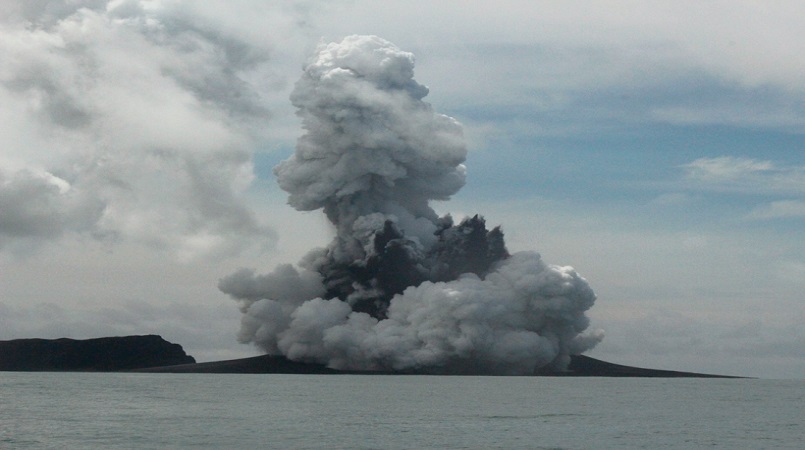
Volcanic eruptions displace air, land, and water in their wake, and according to a new study, they also tickle the atmosphere.
A group of Japanese researchers has found this high-altitude signature may warn people several hours in advance about tsunamis barreling toward them.
On January 15, the Kingdom of Tonga’s Hunga Tonga–Hunga Haʻapai volcano in the Pacific Ocean unleashed a violent eruption as potent as up to 18 megatons of TNT. This explosion triggered an acoustic shockwave that spread across Earth, which produced a worrisome tsunami that traveled faster than those created more directly by the eruption.
In a new study published in the journal Earth, Planets and Space, atmospheric researcher Atsuki Shinbori explains how a vertical shockwave left an imprint on the ions floating more than 50 miles above Earth’s surface, and sent an early alert to some instruments in Japan ahead of the first tsunami wave triggered by the largest atmospheric explosion in human history.
Shinbori — who works at the Institute for Space-Earth Environmental Research at Nagoya University in Japan — tells Inverse that, if his findings lead to a detection approach, “it may be possible to estimate the size of [a] tsunami, such as height … several hours before it arrives.”
